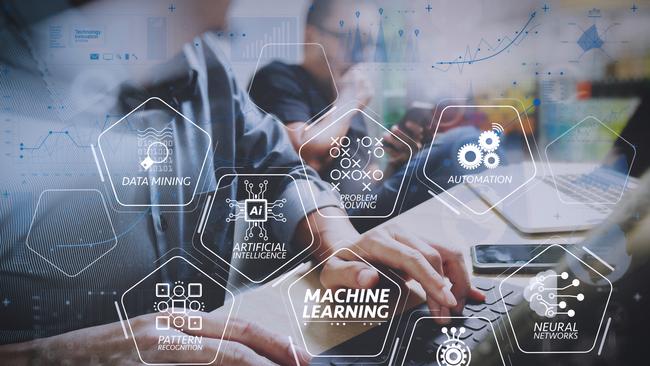
Australia’s large corporations have fallen behind the rest of the developed world in embracing artificial intelligence.
Combining that with our industrial relations legislation, which was designed for a different era, there will be difficulties for many companies as they try to catch up with the rest of the world.
But, despite the delay, AI is going to come, so with the help of Rafee Tarafdar, chief technology officer of Infosys, I will devote this comment piece to how we prepare our young people to carve out a career in this enhanced computer era – an environment that will be very different from that of their parents and grandparents.

In addition, the large number of Australians who face retrenchment as AI is embraced in many workplaces also need to look at ways of adapting.
But before setting out personal strategies required, let me speculate on why Australian companies fell behind the rest of the world, and with the help of Tarafdar examine the three waves of AI which must be understood by all those seeking to take advantage of it.
Tarafdar can’t explain why Australia’s large companies fell behind and why many of our medium and smaller-sized enterprises have moved into the space.
In my view, a large proportion of our big corporations have such tremendous market power, they didn’t have to follow the world. And their large bureaucracies gave millions of reasons to hold back, including advocating for not making decisions when there were industrial relations laws designed to make it frustrating for larger enterprise to operate in the modern world. BHP is already finding problems. Many believed it would be easier under an envisaged Coalition government.
Tarafdar says there are three waves in the AI revolution.
In the first wave, enterprises augment their existing procedures so they operate more efficiently and improve productivity.
Large companies around the world have now moved to wave two, whereas many Australian companies are just starting wave one.
Wave two lasts at least one or two years as enterprises substantially change the way they undertake existing activities. For example, a bank approving business loans will apply AI to applications and will also use it to monitor the cashflow and performance of their borrowing customers.
Under the present systems there is some automation in approval, but monitoring the trading progress of business banking clients is very labour-intensive. Being able to monitor the trading of a borrowing enterprise will encourage banks to lend more to individual borrowers.
Call centres operate with AI. Similarly, in a major factory, AI can be used to greatly improve the ways activities are carried out.
AI software writing revolutionises the speed and slashes the labour intensity. Wave one and wave two will substantially lower labour content and, improve efficiency and boost profits if companies hold their current margins. Many of the high Wall Street price earnings ratios are achieved because of the expectation that AI will deliver much higher profits. But, of course, that is not necessarily so if there is a downturn and margins have to be reduced. Long-term investors need to value shares on the basis of likely AI gains.
In the third wave, we will see enterprises use AI to link with robotic engineering and to create enterprise power that will enable corporations to move into new markets.
Fascinatingly, young tradies are already using AI to put detail into quotes that previously would have required them to work into the early hours of the morning to achieve the detail a particular customer might require.
As I have discussed previously, many of the steps in the ladder that young people use to begin their career will be knocked out by AI. There are going to have to be substantial changes in universities, tertiary institutions and schools to prepare students for this new environment.
Many young people will decide not to pursue university courses and go into trades, but if they are to own the business they will need AI knowledge.
An essential first step is to learn to approach ways of solving a problem and look for opportunities that are hidden in problems. In the AI world, all will need to embrace the concept of continuous education because AI is changing all the time.

The core purpose of these new courses must be to make students “AI-ready” so they know how it works and how to apply it. Because our large companies and education systems have not embraced AI, there is widespread ignorance as to what it means.
Once the base knowledge is acquired, those who are “AI-ready” must approach problems with AI as a tool.
These are qualities that older managers will need to develop as well. A great many will find it too hard, so providing gaps for young people. For existing employees who are vulnerable, look around the enterprise for areas that are not being impacted, and if they are not available then embrace the same procedures as people entering the business. Existing employees have the advantage of knowing what the business does and its customers.
Start learning how to operate in an AI world. Because the AI revolution is on the same scale as steam, electricity and computers, the above guide is merely a starting point. Meanwhile, those borrowing on mortgage, be aware that banks will be looking at whether income sources are vulnerable to AI.




